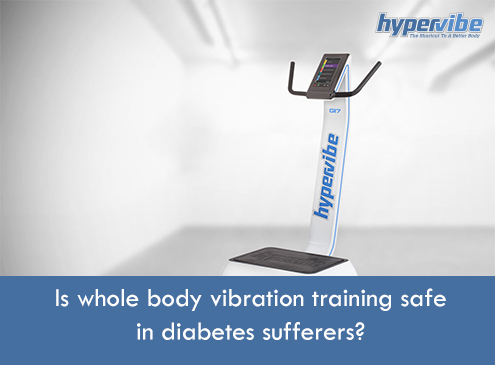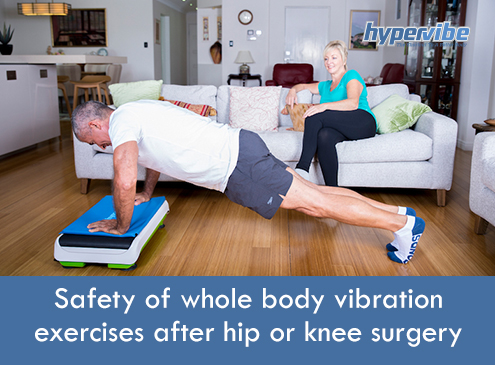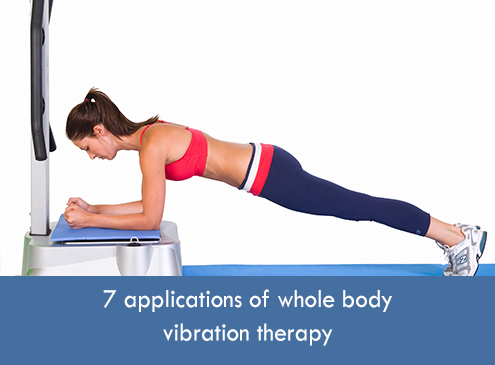Is WBV Training Safe for People With Diabetes?
Physical activity can greatly benefit diabetes sufferers, as it helps in maintaining a healthy weight and in controlling blood sugar levels. Keeping glycemia under control is the surest way to prevent diabetes complications, like leg ulcers, retinopathy (vision problems) or kidney problems.
However, things aren’t always that simple when it comes to exercising with diabetes. Some people affected by this condition lack stamina for conventional aerobic and strength exercises, and others suffer from additional ailments that make exercising difficult. Diabetic peripheral neuropathy for example leads to the loss of sensation and position awareness of the feet, and one is at high risk for fractures and diabetic ulcers if they perform repetitive or intense exercises that place high loads on feet.
Kidney disease is another ailment that is common in diabetes sufferers and may prevent one from engaging in strenuous physical exercise. Those with really high blood sugar levels (above 250mg/dl) should also avoid exercise, especially if ketone corps are also present. Although physical activity does help in regulating insulin production and blood sugar levels, and encourages the consumption of glucose by muscle cells, if insulin production is altered one may suffer from hypoglycemia episodes during the training session and these can lead to seizures and other unpleasant consequences.
It is therefore very important for diabetics to know how to exercise and what types of physical activities to perform in order to manage their weight in a safe and healthy weight. As a general rule, one should measure their blood sugar levels before exercising and during exercise (every 30 minutes), to prevent hypoglycemia. Given below are the levels that are considered safe and unsafe for exercising:
- Blood sugar level lower than 100mg/dL is too low to exercise safely so if you plan to hit the gym or do a home workout, you should first eat a fruit or a small carb-rich snack, then you can begin your workout. Limit the training session to 30-45 minutes and check your glycemia again at the end of the routine, even if you don’t experience hypoglycemia episodes or other unwanted side effects.
- If your blood sugar level is between 100 and 250 mg/dL it is safe to exercise, but again, it’s good to check your glycemia 30 minutes after you start exercising. If your blood glucose drops too much, grab a snack to avoid hypoglycemia, especially if you’re at the gym and have to walk or drive back home for more than 10-20 minutes.
- Don’t forget that your body continues to consume glucose for energy production after you finish exercising, so if you train intensely for 30-45 minutes and then walk for another 20 minutes, you’re likely to experience changes in glycemia levels. Always carry a carb-rich snack or a bottle of orange juice with you when going to gym.
- If you measure your blood glucose before exercise and it’s over 250 mg/dL it is not safe to train. Test your urine for ketones and if they’re present take your insulin and wait until your glycemia gets lower and ketones are no longer present. A slow walk is a safer option than an aerobic session in this case.
- Finally, if your glucose is over 350 mg/dL you should wait until blood sugar drops to a safe range. Take your insulin and measure ketones, as exercising in these conditions may lead to dehydration and ketoacidosis.
After the workout you should measure blood glucose again and grab a snack if your level is under 70 mg/dL. Ir’s also recommended to have a carb-rich snack if you feel weak, shaky or confused, even if your glycemia level is normal, as hypoglycemia can occur later after the training session, as previously said.
Now let’s discuss the exercise options for diabetics. Some people are overweight and can’t practice cardio or strength exercising without risking injuries; others are simply out of shape, and starting with a too demanding routine may not be safe for them. In others, the levels of blood glucose vary greatly during the day, and exercising for too long or at high intensities may be threatening.
For all these people, whole body vibration may be a safe and time-efficient alternative, so if you’re not familiar with WBV yet, here’s what studies say about its effects in diabetes sufferers.
Asian scientists published the results of their study on the effects of aerobic exercise and whole body vibration on glycemic control in type 2 diabetes sufferers in the Asian Journal of Sports Medicine. They tested 30 diabetic males who were divided into three groups, one performing aerobic exercises only, a control group and a third group doing whole body vibration therapy.
The aerobic group performed three walking sessions of 30-60 minutes per week (60-70% of their maximum heartbeat). The WBV group performed 8-12 minutes of stand-up and semi-squat exercises at a frequency of 30Hz and amplitude of 2 mm, three times a week. The scientists tested the concentrations of glucose and insulin before and after 8 weeks of training.
Results showed no significant difference between the two groups (aerobic and whole body vibration), but a more significant decrease in fasting glucose in the groups that exercised (AE and WBV) compared with the control group. Thus, the study showed that whole body vibration can successfully stimulate the metabolism in diabetes sufferers, and can be a safe and effective replacement for diabetic patients who lack stamina for aerobic exercise.
Another case study published in the International Journal of Diabetes Mellitus showed that 4 weeks of whole body vibration training can improve the pain level and gait patterns in diabetic patients with peripheral small fiber neuropathic pain. This study is encouraging as people affected by this condition tend to restrict their physical activities in order to avoid complications of diabetic neuropathy.
To sum it up, it’s well known that being active improves circulation and blood glucose, and helps in managing diabetes, but for some people exercising for 30-60 minutes per day is not doable, for various reasons. For these patients, whole body vibration can be a safe and time-saving alternative to conventional aerobic workouts.














